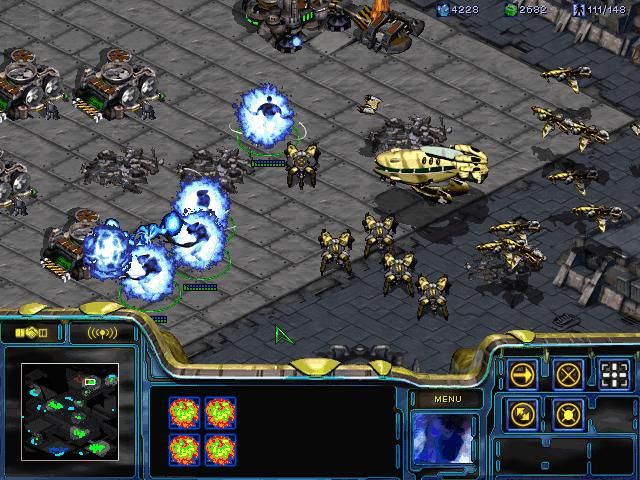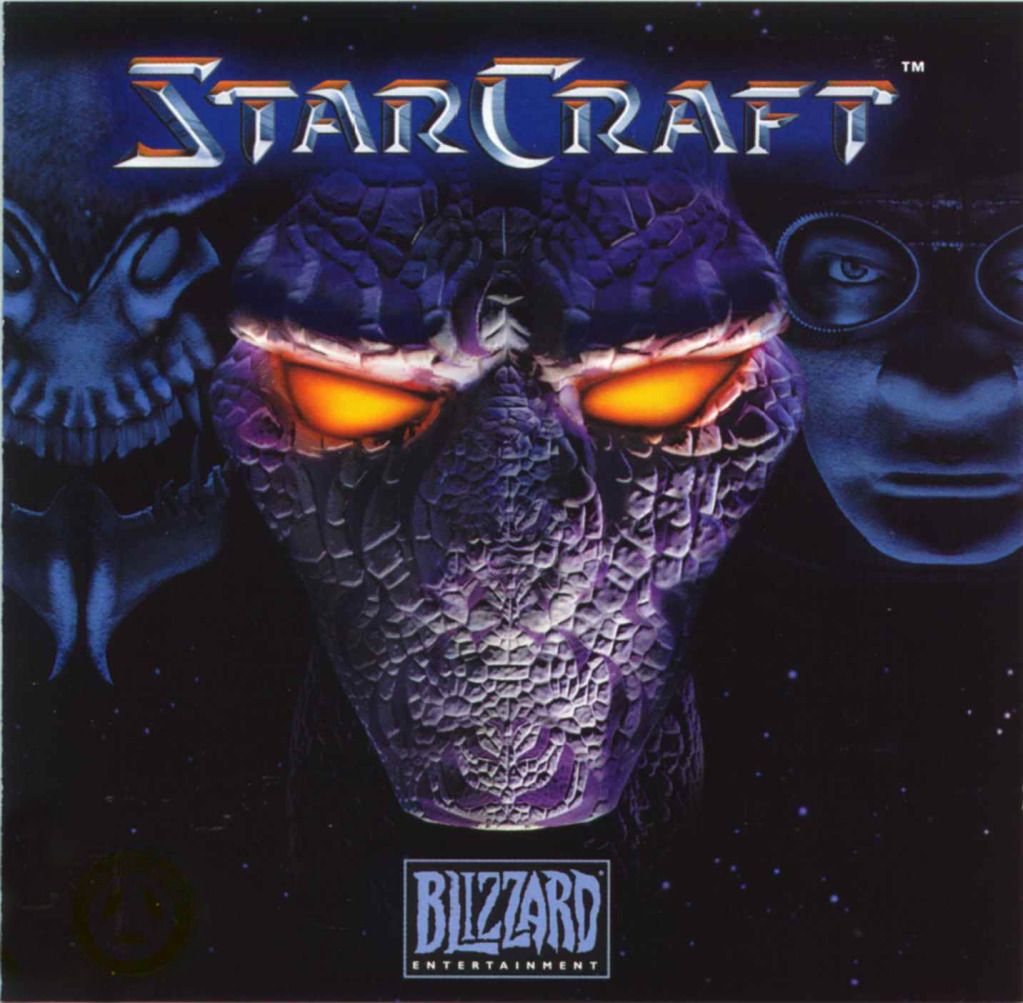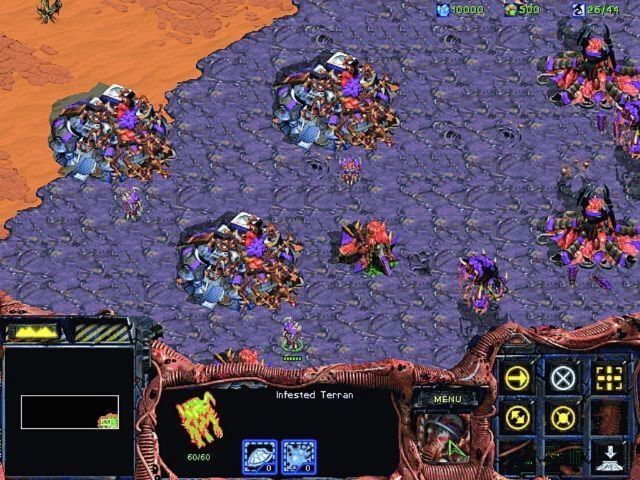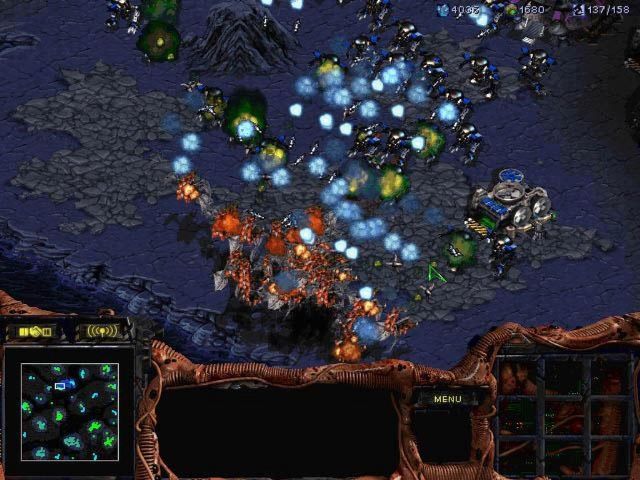
StarCraft is a military science fiction real-time strategy video game developed by Blizzard Entertainment and released for Microsoft Windows on 31 March 1998. The game later spawned a franchise, and is the first game of the StarCraft series. A Mac OS version was released in March 1999, and a Nintendo 64 adaptation co-developed with Mass Media Interactive Entertainment was released on 13 June 2000. Work on the game started shortly after Warcraft II: Tides of Darkness's release in 1995. StarCraft debuted at the 1996 E3, where it was unfavourably compared to Warcraft II; as a result, the project was entirely overhauled and then showcased to public in early 1997, receiving a far more positive response. Set in the 26th century, the game revolves around three species fighting for dominance in a distant part of the Milky Way galaxy known as the Koprulu Sector: the Terrans, humans exiled from Earth skilled at adapting to any situation; the Zerg, a race of insectoid aliens in pursuit of genetic perfection, obsessed with assimilating other races; and the Protoss, a humanoid species with advanced technology and psionic abilities, attempting to preserve their civilization and strict philosophical way of living from the Zerg. Many of the industry's journalists have praised StarCraft as one of the best and most important video games of all time, and for having raised the bar for developing real-time strategy games. With more than 11 million copies sold worldwide as of February 2009, Starcraft is one of the best-selling games for the personal computer. The game has been praised for pioneering the use of unique factions in real-time strategy gameplay and for a compelling story. StarCraft's multiplayer is particularly popular in South Korea, where players and teams participate in professional competitions, earn sponsorships, and compete in televised tournaments. StarCraft has had its storyline adapted and expanded through a series of novels, the expansion pack StarCraft: Brood War and two authorized add-ons. Over 12 years later, a sequel, StarCraft II: Wings of Liberty, was released in July 2010, with a further expansion pack, StarCraft II: Heart of the Swarm, expected in 2012 Gameplay A Protoss force attacks a Zerg colony, shown from StarCraft's isometric perspective Blizzard Entertainment's use of three distinct races in StarCraft is widely credited with revolutionizing the real-time strategy genre. All units are unique to their respective races and while rough comparisons can be drawn between certain types of units in the technology tree, every unit performs differently and requires different tactics for a player to succeed. The enigmatic Protoss have access to powerful units and machinery and advanced technologies such as energy shields and localized warp capabilities, powered by their psionic traits. However, their forces have lengthy and expensive manufacturing processes, encouraging players to follow a strategy of the quality of their units over the quantity. The insectoid Zerg possess entirely organic units and structures, which can be produced quickly and at a far cheaper cost to resources, but are accordingly weaker, relying on sheer numbers and speed to overwhelm enemies. The Terrans provide a middle ground between the other two races, providing units that are versatile and flexible. They have access to a range of more ballistic military technologies and machinery, such as tanks and nuclear weapons. Although each race is unique in its composition, no race has an innate advantage over the other. Each species is balanced out so that while they have different strengths, powers, and abilities their overall strength is the same. The balance stays complete via infrequent patches (game updates) provided by Blizzard. StarCraft features artificial intelligence which scales in difficulty, although the player cannot change the difficulty level in the single-player campaigns. Each campaign starts with enemy factions running easy AI modes, scaling through the course of the campaign to the hardest AI modes. In the level editor provided with the game, a designer has access to four levels of AI difficulties: "easy", "medium", "hard" and "insane", each setting differing in the units and technologies allowed to an AI faction and the extent of the AI's tactical and strategic planning The single-player campaign consists of thirty missions, split into ten for each race. Each race relies on two resources to sustain their game economies and to build their forces: minerals and vespene gas. Minerals are needed for all units and structures, and are obtained by using a worker unit to harvest the resource directly from mineral nodes scattered around the battlefield. Players require vespene gas to construct advanced units and buildings, and acquire it by building a refinery on top of a geyser and using worker units to extract the gas from it. In addition, players need to regulate the supplies for their forces to ensure that they can construct the number of units they need. Although the nature of the supply differs between the races—Terrans use physical supplies held in depots, Protoss use a psionic power nexus and Zerg are regulated by the number of controlling overlord units present—the supply mechanic works in exactly the same way for each race (with different side effects for each race), allowing players to create new units when there are sufficient resources to sustain them. Base construction Protoss and Zerg building construction is limited to specific locations: Protoss buildings need to be linked to a power grid while almost every Zerg structure must be placed on a carpet of biomass, called "creep", that is produced by certain structures. Terran buildings are far less limited, with certain primary base structures possessing the ability to take off and fly slowly to a new location. Terran buildings, however, require the worker unit to continue construction on the building until it is completed. Also, once a Terran building has taken a certain amount of damage, it will catch fire and eventually burn to the ground without further enemy action, though this can be prevented by repairs performed by a worker unit. The Protoss, by contrast, only require a worker unit to begin the process of transporting a building to the theater of operations via warp, and their buildings' shields (but not their structure) are regenerative. The Zerg worker unit physically transforms into the structure created, which is capable of slowly healing itself. Setting See also: Races of StarCraft StarCraft takes place in a science fiction universe created by Chris Metzen and James Phinney for Blizzard Entertainment. According to the story presented in the game's manual, the overpopulation of Earth in the early 21st century has caused the international government to exile undesirable elements of the human race, such as criminals, the cybernetically enhanced and genetic mutants to colonize the far reaches of the galaxy. An attempt to colonize a nearby solar system goes wrong, resulting in humanity's arrival in the Koprulu Sector. In the distant Koprulu Sector of the galaxy, the exiles form several governments, but quickly fall into conflict with each other. One government, the Confederacy of Man, eventually emerges as the strongest faction, but its oppressive nature and brutal methods of suppressing dissidents stir up major rebel opposition in the form of a terrorist group called the Sons of Korhal. Just prior to the beginning of the game, in December 2499, an alien race possessing advanced technology and psionic power, the Protoss, makes first contact with humanity by destroying a Confederate colony world without any prior warning. Soon after this, the Terrans discover that a second alien race, the insectoid Zerg, has been stealthily infesting the surface of several of the Terran colonies, and that the Protoss are destroying the planets to prevent the Zerg from spreading. With the Confederacy threatened by two alien races and internal rebellion, it begins to crumble. Plot Plot exposition often takes place in menued screens with only the characters' faces shown and their captioned voices heard. The story of StarCraft is presented through its instruction manual, the briefings to each mission and conversations within the missions themselves, along with the use of cinematic cutscenes at key points. The game itself is split into three episodes, one for the player to command each race. In the first segment of the game, the player and Jim Raynor are attempting to control the colony of Mar Sara in the wake of the Zerg attacks on other Terran worlds. After the Confederacy arrests Raynor for destroying Confederate property, despite the fact that it had been infested by the Zerg, the player joins Arcturus Mengsk and the Sons of Korhal. Raynor, who is freed by Mengsk's troops, also joins and frequently accompanies the player on missions. Mengsk then begins to use Confederate technology captured on Mar Sara to lure the Zerg to Confederate installations and further his own goals. After forcing Confederate general Edmund Duke to join him, Mengsk sacrifices his own second-in-command, Sarah Kerrigan, to ensure the destruction of the Confederacy by luring the Zerg to the Confederate capital Tarsonis. Raynor is outraged by Mengsk's true aims of obtaining power at any cost and deserts, taking with him a small army of the former colonial militia of Mar Sara. Mengsk reorganizes what remains of the Terran population into the Terran Dominion, crowning himself as emperor. The second campaign reveals that Kerrigan was not killed by the Zerg, but rather is captured and infested in an effort to incorporate her psionic traits into the Zerg gene pool. She emerges with far more psionic powers and physical strength, her DNA completely altered. Meanwhile, the Protoss commander Tassadar discovers that the Zerg's cerebrates cannot be killed by conventional means, but that they can be harmed by the powers wielded by the heretical dark templar. Tassadar allies himself with the dark templar prelate Zeratul, who assassinates Zasz, one of the Zerg's cerebrates in their hive clusters on Char. The cerebrate's death results in its forces running amok through the Zerg hives, but briefly links the minds of Zeratul and the Zerg Overmind, allowing the Overmind to finally learn the location of the Protoss homeworld Aiur, which the Overmind has been seeking for millennia. The main Zerg swarm promptly invades Aiur while Kerrigan is dispatched to deal with Tassadar and despite heavy Protoss resistance, the Overmind is able to embed itself into the crust of the planet. The final episode of the game sees Aldaris and the Protoss government branding Tassadar a traitor and a heretic for conspiring with the dark templar. The player initially serves Aldaris in defending Aiur from the Zerg invasion, but while on a mission to arrest Tassadar, the player joins him instead. A Protoss civil war erupts, pitting Tassadar, Zeratul, and their allies against the Protoss establishment. The dark templar prove their worth when they use their energies to slay two more of the Zerg cerebrates on Aiur, and the Conclave reconciles with them. Aided by Raynor's forces—who sided with Tassadar back on Char—the Protoss break through the Overmind's weakened defenses and destroy the Overmind's outer shell, but take heavy casualties in the process. Tassadar channels his own psionic energies in combination with those of the dark templar through the hull of his command ship and crashes it into the Overmind, sacrificing himself in order to destroy it.



Link of game to download : http://adf.ly/JaCEl
size of game to download : 631.2 MB
Program to mount iso games Best : Deamon Tools

1. Download starcraft original extract it with win zip
to get iso file
2. mount Starcraft iso with deamon tools to install it

| SYSTEM REQUIREMENTS | |
| MINIMUM PC REQUIREMENTS | |
| Minimum CPU Type: Pentium | |
| Minimum CPU Speed: 90 MHz | |
| Minimum RAM Required: 16 MB | |
| Minimum Hard Disk Space: 80 MB | |
| Graphics Type: SVGA | |
| Color Depth: High Color | |



No comments:
Post a Comment